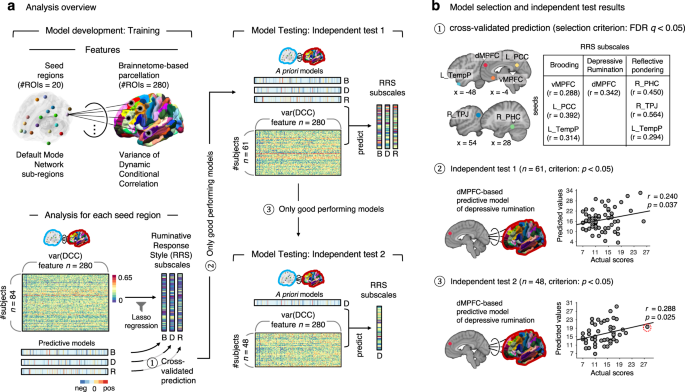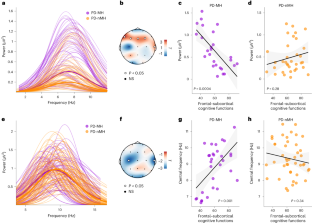fMRIに基づく反芻の予測マーカーを開発し、健常人や臨床集団に一般化する Developing an fMRI-based predictive marker for rumination that can be generalized to healthy and clinical populations
2023-06-30 韓国基礎科学研究院(IBS)
◆この研究は、反芻とうつ病の関連性を明らかにし、うつ病のバイオマーカーとしてのモデルの可能性を示しています。将来的には、個別の介入や治療アプローチに役立つ個人に合わせた手法の開発につながるかもしれません。
<関連情報>
- https://www.ibs.re.kr/cop/bbs/BBSMSTR_000000000738/selectBoardArticle.do?nttId=22899&pageIndex=1&searchCnd=&searchWrd=
- https://www.nature.com/articles/s41467-023-39142-9
背内側前頭前皮質に基づく反芻の動的機能的結合モデル A dorsomedial prefrontal cortex-based dynamic functional connectivity model of rumination
Jungwoo Kim,Jessica R. Andrews-Hanna,Hedwig Eisenbarth,Byeol Kim Lux,Hong Ji Kim,Eunjin Lee,Martin A. Lindquist,Elizabeth A. Reynolds Losin,Tor D. Wager & Choong-Wan Woo
Nature Communications Published:15 June 2023
DOI:https://doi.org/10.1038/s41467-023-39142-9

Abstract
Rumination is a cognitive style characterized by repetitive thoughts about one’s negative internal states and is a common symptom of depression. Previous studies have linked trait rumination to alterations in the default mode network, but predictive brain markers of rumination are lacking. Here, we adopt a predictive modeling approach to develop a neuroimaging marker of rumination based on the variance of dynamic resting-state functional connectivity and test it across 5 diverse subclinical and clinical samples (total n = 288). A whole-brain marker based on dynamic connectivity with the dorsomedial prefrontal cortex (dmPFC) emerges as generalizable across the subclinical datasets. A refined marker consisting of the most important features from a virtual lesion analysis further predicts depression scores of adults with major depressive disorder (n = 35). This study highlights the role of the dmPFC in trait rumination and provides a dynamic functional connectivity marker for rumination.


